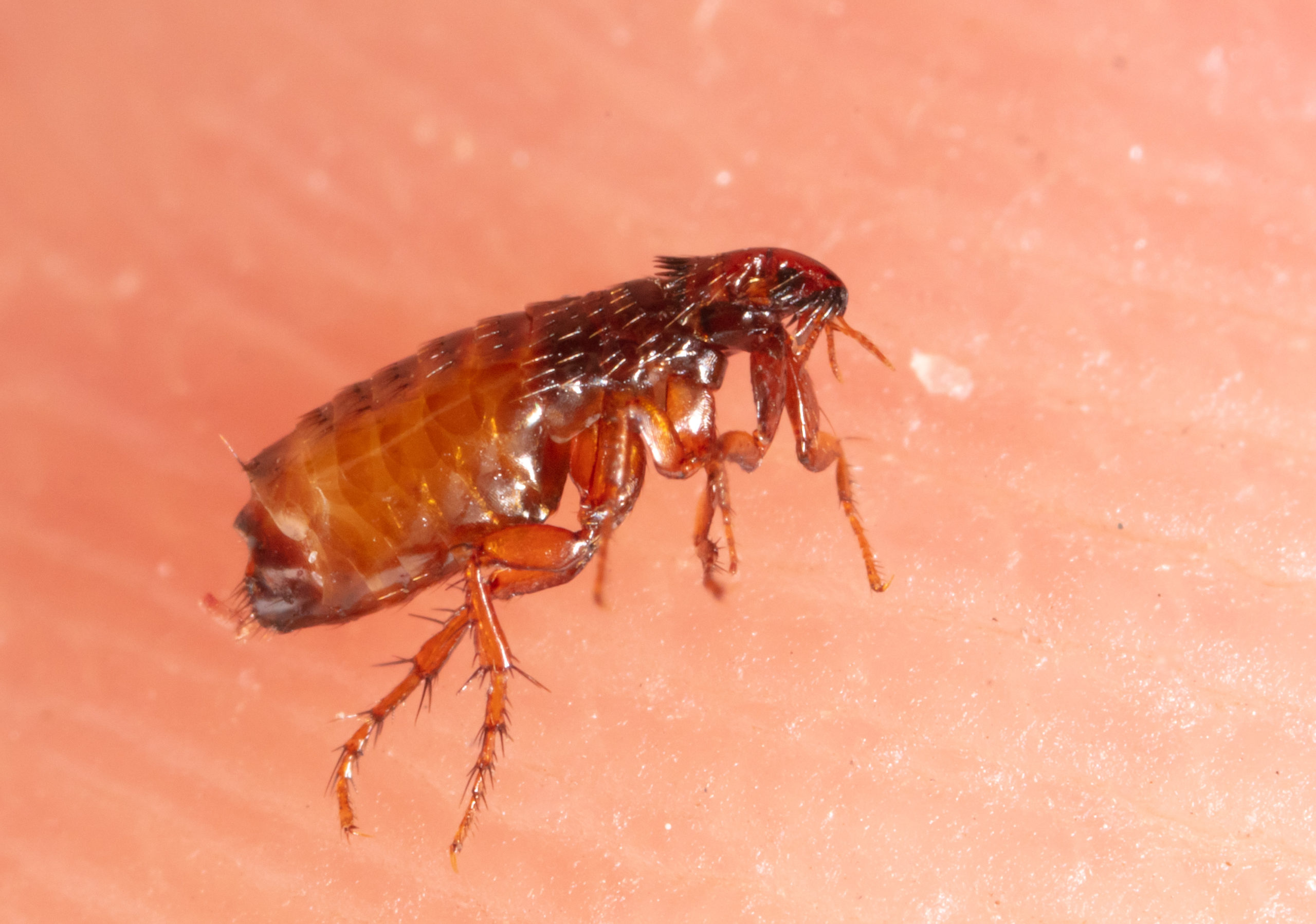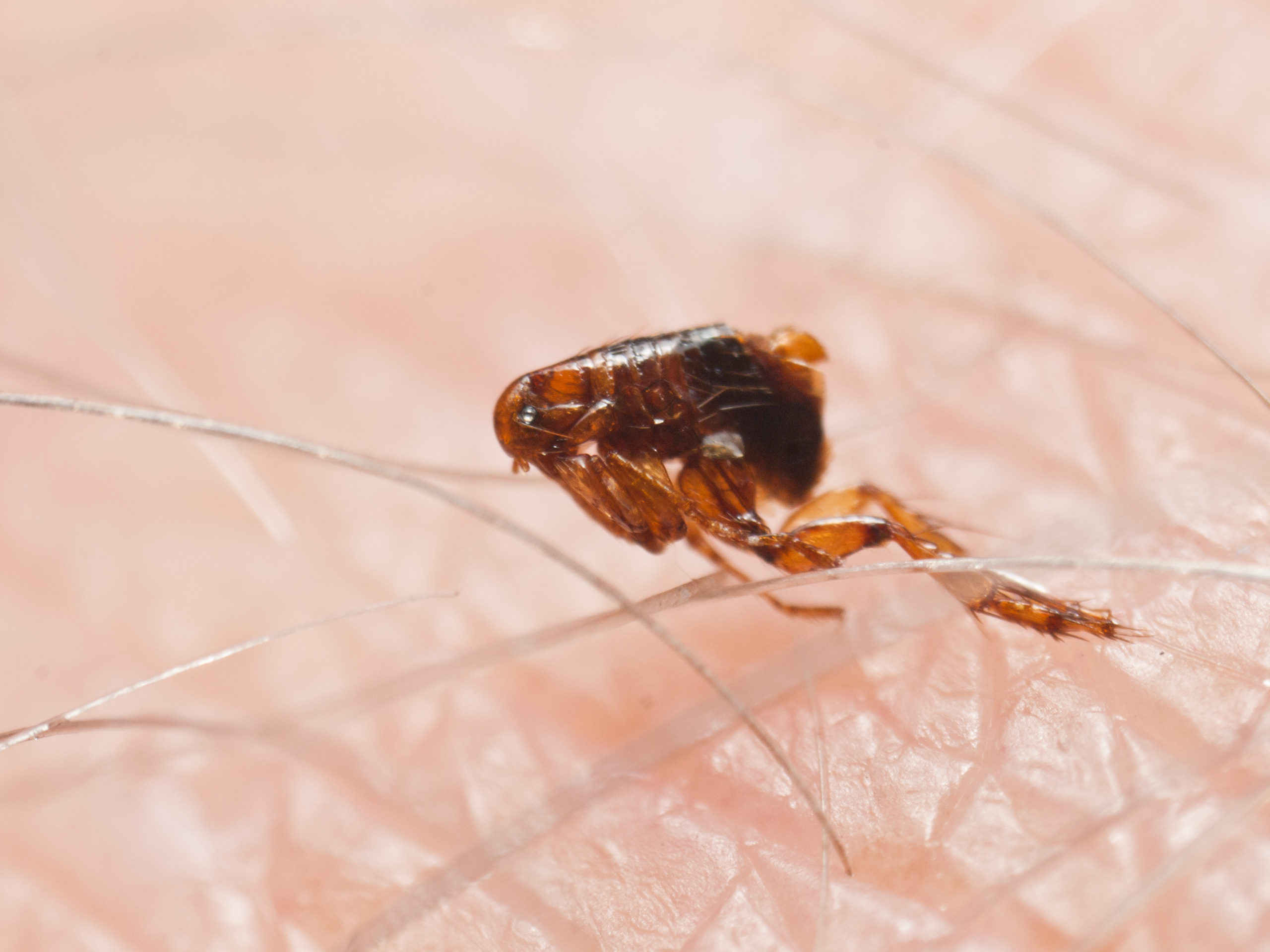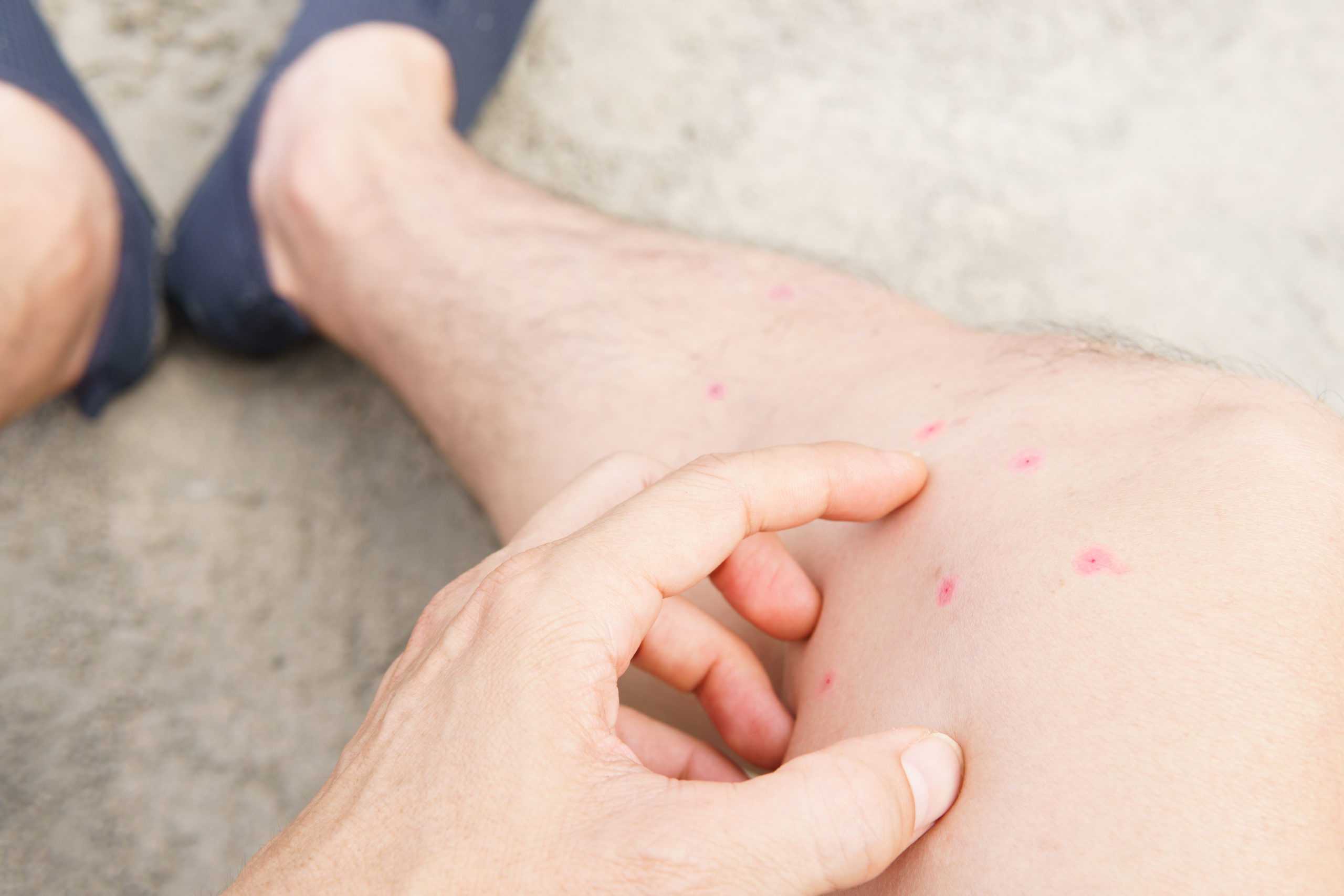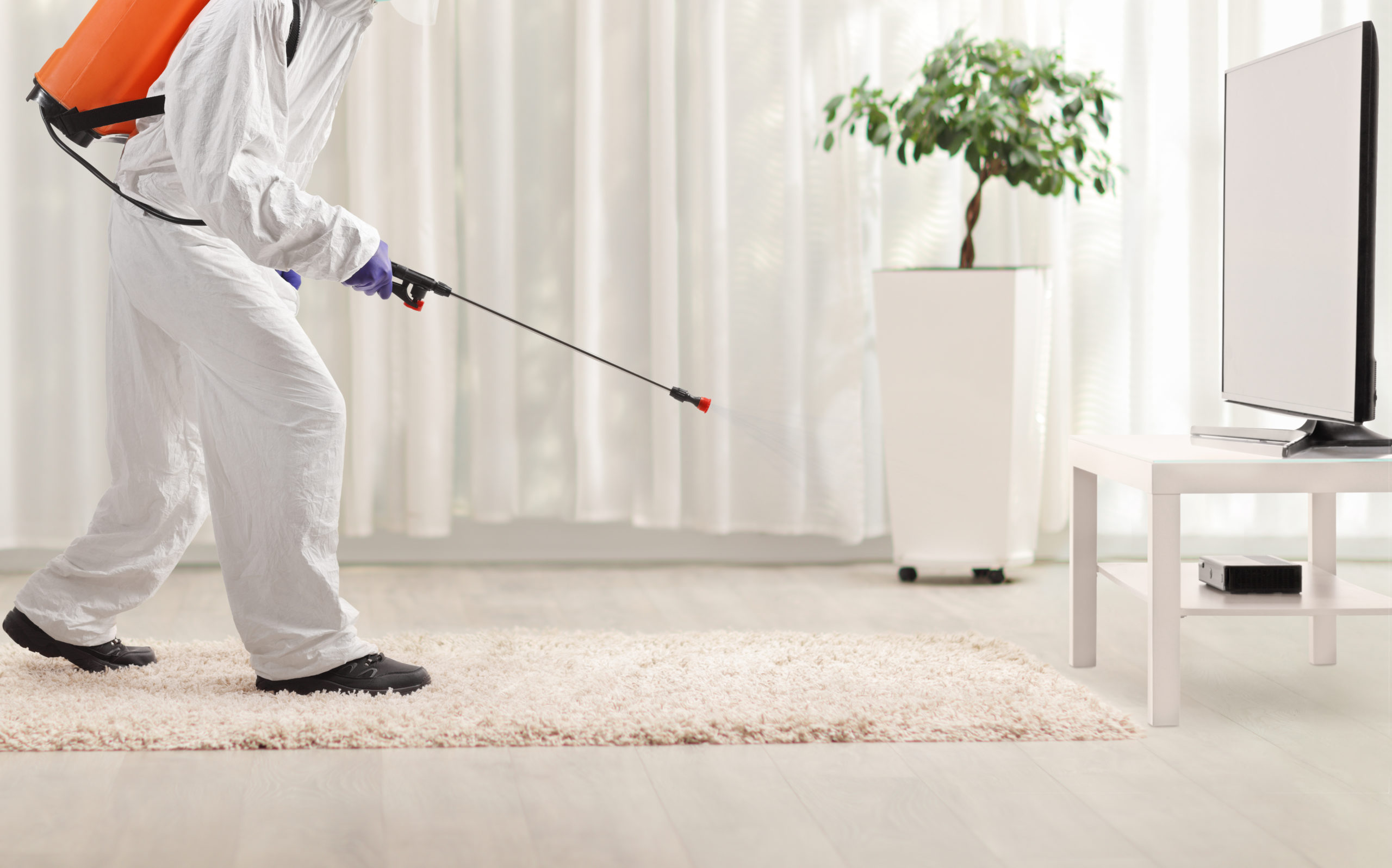Flea Treatments
Flea Treatments
Fleas 101
Fleas are external parasites that bite their various victims, leaving behind itchy red marks. There are more than 2,500 different species of fleas in existence, roughly 300 of which are found in the US. Of these 300, the most prominent species to plague us is the Ctenocephalides felis… also known as the “cat flea,” though, this is a misnomer as they more commonly infest canines and will even bite humans.
On average, these pests measure 1/8 inch in length and are a reddish-brown color. Unfortunately, these nasty insects have very high reproductive potential with a single female producing approximately 2,000 eggs in her lifetime, and the entirety of a flea’s life from egg through adulthood is, on average, completed in 28 days, leading to the existence of several generations in a single season. 
Fleas in the Home
Fleas are external parasites which means they travel on the backs, legs, etc. of their hosts from place to place and being to being. As such, the most common way that fleas get into your home is on pets that spend time outdoors or with other pets. Historically, fleas are notorious for being spread by rats, so if you notice fleas in a pet-less home, it may be due to a rodent infestation. 
Dangers of Fleas
When fleas enter homes, they tend not to discriminate – they will bite pets and humans alike and can spread dangerous diseases to both of us. Historically, fleas are one of the most dangerous pests. In the early Middle Ages between 541 to 767, they spread the bacterium Yersinia Pestis (aka the Black Plague, Black Death, or the Bubonic Plague) throughout Europe, precipitating a hefty death toll. While the plague is mainly perceived as a historical illness caused by rats, this is not completely true. It is still possible to contract the Black Plague today, although thankfully, our modern medicine can now treat the bacteria if caught early enough. Other diseases that fleas can transmit to humans include tularemia and typhus.
For pets, the most common flea-related problem is an immune response called flea allergy dermatitis (FAD), which is caused by flea saliva being injected into the dermis of their victims resulting in intense itchiness and skin irritation. In other severe cases, when various fleas are attacking one host, your dog or cat could be at risk of developing a very serious medical condition: anemia. Symptoms of anemia include increased lethargy, labored and/or rapid breathing, and weakness – all signs that your furry friend requires immediate medical intervention. If left untreated, this flea-induced condition can unfortunately even lead to death. 
Flea Prevention
Fleas are far from being simple annoyances and are considered very serious pests due to the variety of health risks they pose. Thankfully, there are a few steps you can take to help prevent you from ever running into a flea problem. If you have pets, products like Frontline Plus, K9 Advantix, and more, all provide protection for your furry friends against both fleas and ticks. Talking with your veterinarian can help you select the best preventative products for you and your furry friends.
Furthermore, you might want to consider installing a fence in your yard if you do not have one already. Unwelcome guests of all kinds wander through yards, and deer, rabbits, racoons, squirrels, opossums, geese, voles and more can not only ruin your gardens, but they can carry fleas into your space on their fur. By guarding your yard from different animals that can trail through, you can reduce your risk of fleas being brought into your space. 
Our Flea Treatments
If you’ve fallen victim to a flea infestation, our Pointe Pest flea experts can work with you to rid your home of these nasty parasites. For flea prevention, we offer our seasonal Mosquito Treatments which, in addition to warding off mosquitos, also prevents ticks and fleas from entering your yard. This is done with a powerful spray combination of the following products: Cyzmic, Stryker, and Tekko-Pro, all of which are compatible with one another and mixed with water for ideal application.
Once fleas have infiltrated your home, you will need interior responsive flea control treatments. At Pointe Pest Control, we use a combination of two powerful products that are proven to be extremely effective at flea abatement. First, we spray a product called Phantom along the baseboards which forms a barrier around your room, then we apply Precor on carpets, couches, pet bedding, etc. During the application, you and your family will need to vacate the house for a short period of time as the products dry, but, once dried, they are completely safe for adults, kids, and pets. These treatments target the fleas throughout your home and work to not only remove the fleas that are currently present but help prevent any future infestations as well.
Call us anytime for more information on how we can help you with fleas. Stay safe! Stay flea-free! 
Citations
11 Bugs to Watch Out For If You Have Pets (2017) American Pest. Available at: https://www.americanpest.net/blog/post/11-bugs-to-watch-out-for-if-you-have-pets (Accessed: September 2020).
Anemia (no date) Mayo Clinic. Mayo Foundation for Medical Education and Research. Available at: https://www.mayoclinic.org/diseases-conditions/anemia/symptoms-causes/syc-20351360 (Accessed: September 2020).
Fleaborne Diseases of the United States (2020) Centers for Disease Control and Prevention. U.S. Department of Health and Human Services. Available at: https://www.cdc.gov/fleas/diseases.html (Accessed: September 2020).
Fleas and Ticks (no date) ASPCA. Available at: https://www.aspca.org/pet-care/general-pet-care/fleas-and-ticks (Accessed: February 23, 2021).
The Hidden Dangers of Flea Bites: What to Look For (no date) The Associated Press. Seresto. Available at: https://apnews.com/sponsored/?prx_t=z40EAq48yAniAPA&prx_ro=s&ntv_fpc=671dc30c-79c6-4e77-b41f-040c722e9642&ntv_fr (Accessed: September 2020).
Hill, C. and MacDonald, J. (2008) Fleas, Purdue University . Purdue’s College of Agriculture: Entomology Department. Available at: https://extension.entm.purdue.edu/publichealth/insects/flea.html (Accessed: September 2020).
Pest Control Technology (2021) “The Pest: Always Looking for an ‘In’,” July, pp. 30–30.
Prevention and Control: Fleas (N/A) Illinois Department of Public Health. The Division of Environmental Health. Available at: http://www.idph.state.il.us/envhealth/pcfleas.htm (Accessed: May 2020).
Tularemia (2018) Mayo Clinic. The Mayo Foundation for Medical Education and Research (MFMER). Available at: https://www.mayoclinic.org/diseases-conditions/tularemia/symptoms-causes/syc-20378635 (Accessed: May 2020).
Request a Free Quote Today
(We do not share your data with anybody, and only use it for its intended purpose)


